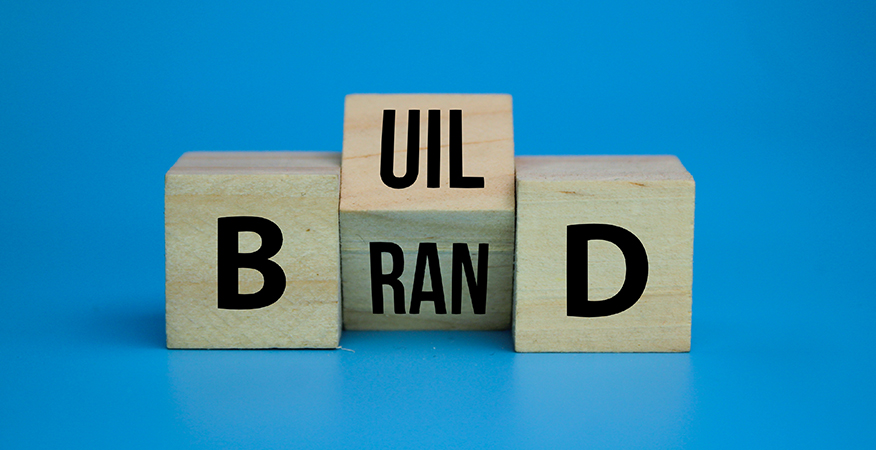
Mobile Website Design Tips to Improve User Experience
May 9, 2025
Is Paid Advertising Still Worth It in a Post-Cookie World?
May 22, 2025Customers are constantly bombarded with choices.
One of the most effective ways for small businesses to stand out is through great brand identity design. But it’s not just about looking good. A strong brand identity plays a crucial role in shaping how customers perceive your business, whether they trust it, and whether they’re loyal.
Brand identity includes more than just a logo. It encompasses your color palette, typography, tone of voice, imagery, and the overall personality that your brand communicates across all platforms. When these elements work together consistently, they create a memorable and trustworthy customer experience.
We’ll explore why brand identity design is so powerful, how it affects customer behavior, and how to improve it in your business.
1. What is brand identity, and why does it matter for customer trust?
Brand identity is the visual and emotional representation of your business. It’s how your brand looks, feels, and sounds to the outside world. From your website design and packaging to your Instagram captions and email newsletters, every detail contributes to your identity.
A well-designed and consistent brand identity helps reduce confusion and build familiarity. And familiarity breeds trust. In fact, according to Lucidpress (2020), consistent brand presentation across all platforms can increase revenue by up to 23%. That’s because when customers recognize your brand and know what to expect, they’re more likely to engage and stay loyal.
2. How does a well-designed logo influence first impressions?
Logos are often the first point of contact between a brand and a potential customer. Within just 10 seconds, people form judgments about a brand based on its logo. A study by Renderforest shows that 75% of people recognize a brand by its logo alone, highlighting its powerful impact.
A trustworthy logo is usually simple, memorable, and professional. It communicates the essence of your business without being cluttered or confusing. Whether it’s the golden arches of McDonald’s or the swoosh of Nike, a well-designed logo becomes a visual shortcut for trust.
3. Why is consistency across touchpoints crucial for customer loyalty?
Your customer might first discover your brand through an Instagram ad, then visit your website, and later receive an email from you. If all of those touchpoints feel different or disconnected, it creates friction and distrust. On the other hand, when every experience feels like it belongs to the same cohesive brand, it reinforces your credibility.
Lucidpress (2021) reports that visual consistency can increase brand visibility by 3.5 times. Beyond visibility, consistency builds emotional security. When customers see the same colors, tone, and design language wherever they interact with your business, it builds confidence in your brand and deepens loyalty over time.
4. Can color psychology impact how trustworthy a brand appears?
Absolutely. Colors evoke emotional responses, and choosing the right palette is a subtle yet powerful part of brand identity design. Blue is often associated with trust and professionalism, which is why it’s commonly used in banking and tech. Green suggests calmness and sustainability, while red conveys energy and urgency.
According to the University of Loyola, Maryland, color increases brand recognition by up to 80%. This makes color one of the most impactful tools in your branding arsenal. By selecting and consistently using a strategic color palette, you help customers recognize and feel comfortable with your brand, whether they see your ad on Facebook or your product on a store shelf.
5. How do typography and visual style affect brand perception?
Typography is more than just a font choice. It’s a visual language that communicates tone and personality. Serif fonts can suggest tradition and reliability, while sans-serif fonts might feel modern and clean. Custom typefaces can further differentiate your brand and give it a unique visual signature.
Visual hierarchy, how you structure headlines, subheadings, and body text, also plays a critical role in trust. Google’s UX research shows that clean, readable typography improves user retention and guides behavior. A strong brand identity design ensures that typography and visuals work together to make your brand more approachable and professional.
6. What role does storytelling play in brand identity and customer loyalty?
Design isn’t just about visuals. It’s also about storytelling. A strong brand identity tells a story, one that reflects your mission, values, and personality. It helps customers relate to your business on a human level.
Look at companies like Apple and Airbnb. Their design choices, from typography to photography to website layout, all work together to communicate who they are and what they believe in. This emotional narrative makes customers feel connected, which leads to stronger loyalty.
7. How can a strong brand identity increase customer retention and referrals?
When customers have a memorable and positive experience with your brand, they’re more likely to return. And they’re even more likely to recommend you to others. That’s why strong brand identity design doesn’t just create a good first impression, it creates lasting impressions.
According to Motista (2022), customers with emotional connections to a brand have a 306% higher lifetime value. That connection often stems from a consistent, trustworthy identity that delivers on its promises. Loyal customers not only stick around, they become brand advocates, spreading your message through word-of-mouth and social media.
8. What are some real-world examples of companies building trust through great design?
Apple’s clean, minimalist branding conveys innovation and quality. From their packaging to their retail stores, everything is part of a unified visual language that feels premium and trustworthy.
Coca-Cola has used the same red-and-white color palette and iconic typography for over a century. This consistency has helped build a global reputation for joy and familiarity.
Spotify’s design is another strong example. Whether you use the mobile app or desktop version, the branding is consistent, from the green-and-black palette to the layout and tone of voice. This creates a seamless, trustworthy experience that keeps users engaged.
9. How can businesses evaluate and improve their brand identity today?
If you’re a small business owner, improving your brand identity design starts with a brand audit. Take a critical look at your logo, website, social media, packaging, and other customer-facing materials. Are they visually consistent? Do they reflect your business values and appeal to your target audience?
Gather feedback from customers and team members. Update your style guide if necessary, ensuring it outlines how your brand should look and sound across all channels. Test new visuals using A/B testing, and monitor performance using analytics to understand how your updates impact customer perception and behavior.
Frequently Asked Questions
Below are some commonly asked questions to consider:
What is the difference between brand identity and branding?
Brand identity refers to the visual and emotional components that define a brand’s image, like its logo, colors, and typography. Branding is the broader process of building and shaping that identity over time.
How often should I update my brand design?
While consistency is important, it’s a good idea to review your brand identity every few years or when your business evolves. Small updates can modernize your look without losing brand recognition.
Does brand identity affect SEO?
Indirectly, yes. A strong identity improves user experience and engagement, which can lead to lower bounce rates and longer site visits, both of which can benefit your search engine rankings.
Brand identity design is key to customer trust
In an age of information overload, great brand design cuts through the noise. It helps your business make a memorable first impression, build emotional connections, and establish long-term trust and loyalty. Whether you’re a startup or a growing business, investing in your brand identity is one of the smartest ways to improve customer retention and fuel word-of-mouth growth.
If you’re not sure where to start with your brand design, you can always get help from a reliable branding and design services provider.

